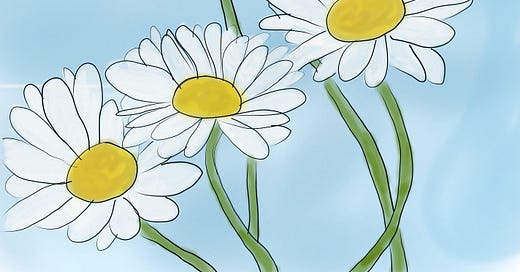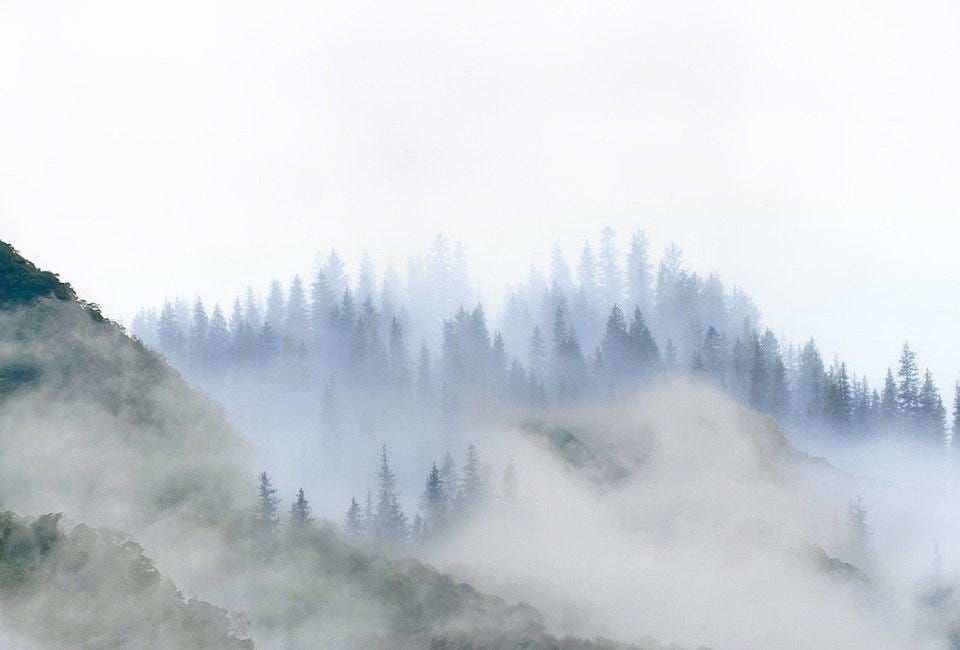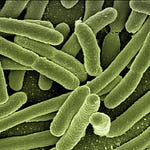Part 2: Growing Tall and Staying Small - A Map of the Kingdom
Praised be my Lord for our sister, mother earth, The which sustains and keeps us And brings forth diverse fruits with grass and flowers bright.
- St. Francis of Assisi.
Looking at the very thick atlas of the Kingdom of Plants (scientists have identified nearly 300,000 species!), we would find the regions (the divisions) split into two halves like a country at war with itself. The first (and much smaller) part, contains only little guys like the algae, mosses, and liverworts, while the second part has all the towering giants, from the pine tree to the prairie grasses. Fortunately, the Kingdom of Plants is at peace; the separation comes from the structure of the plants.
So, what’s this big difference? Well, let’s compare the oak tree in my front yard with some of the moss that grows on its side. They are both green, and they are both autotrophs that make their food through photosynthesis. But, it is pretty absurd to think that they have much in common besides that – our tree is nearly fifty feet tall while the moss is only a fraction of an inch.
How can our oak tree grow so very tall (after all, even animals don’t grow that tall)? Trees are vascular plants – they have features like tubes running from their roots through their trunk and branches, and out to the very tips of their leaves. This transportation system moves water, minerals, and food through the planet quite efficiently, allowing them to grow much taller than other creatures and live in harsher environments.
Our fragile little moss, on the other hand, is a non-vascular plant that lack this tube system. It has no way to transport water and food throughout its body, and consequently has no real stem or even roots. The leaves of this type of plant are often insanely thin (even just one cell thick!), with only little hair-like structures known as rhizoids to anchor themselves into place. How do they get water if they have no roots?! I hear you cry. Well, they mostly absorb it from the air, so our petite moss must stay where it is humid or damp and cannot venture into drier, harsher climes. The moss on my tree will also never get to have any sunny flowers (although the idea of a moss with a giant orange flower is pretty hilarious), but instead it has to reproduce with spores, which we will talk about more later.
What about plant-like protists? Aren’t they like non-vascular plants? After all, they often have similar names like green, red, and brown algae. Plants and plant-like protists are really similar (so similar, scientists are still moving creatures around between the groups), but to really see the big difference, you have to break out a microscope and look at their cells. Plants all have stiff cell walls made of cellulose (a kind of carbohydrate). Plant-like protists, on the other hand, have cell walls made of protein or silica (like sand) or something else that is completely unknown (no kidding – the yellow-green algae has cell walls made of some unknown material!).
Before we hop back on our birds to head to the next kingdom, I have to show you my favorite weird plants – the carnivorous plants. These are the bizarre creatures that both make their own energy from the sun and eat animals. Plants such as the Venus flytrap and the pitcher plant have amazed and baffled generation after generation, a living paradox. These creatures live in places where the soil lacks important minerals, so to make up for the deficit, they catch and consume animals for their minerals, but not actually for energy. So, even these amazingly bizarre creatures are still autotrophs like all of the other plants.
Ready for More?
Chapter 6: The Kingdom of Animals - Invertebrates
Welcome to the first installment in the Kingdoms of Creation home education science program. We’re glad you’re here. Each chapter is split into two parts: Part 1 is for younger students (usually K-4); Parts 1 and 2 together are for older students (usually 5-8). The Kingdoms of Creation is a comprehensive biology program. See the full table of contents
Need Something Else?
Visit the Welcome Page
Welcome to the Kingdoms of Creation
A long time ago in land not so far away, the Creator made a world. This world was big and beautiful, wild and wonderful, fantastic and frightening. It was full of amazing creatures like the ping-pong tree sponge (an immobile creature that looks just like its name sounds but eats shrimp in the deep dark of the sea) and the dragon mantis (a large brown …
Or Check Out the Original Post
Chapter 5: The Kingdom of Plants
Welcome to the first installment in the Kingdoms of Creation home education science program. We’re glad you’re here. Each chapter is split into two parts: Part 1 is for younger students (usually K-4); Parts 1 and 2 together are for older students (usually 5-8). The Kingdoms of Creation is a comprehensive biology program. See the full table of contents
















Share this post